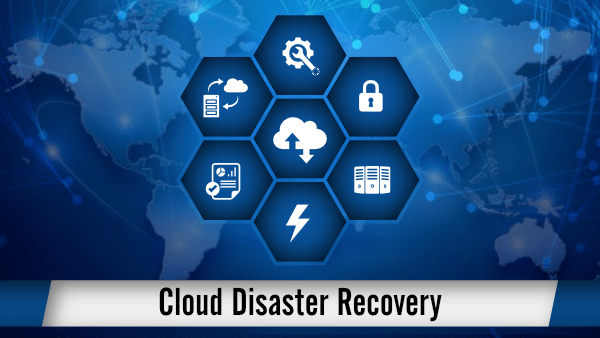
Imagine waking up one morning to find out that a flood has swept through your town, causing major damage. Now, imagine you run a business there.
What happens next? This is where technology helps businesses recover from disasters and run smoothly. This blog post will explore technology’s role in disaster recovery and business continuity.
It helps companies recover faster than ever. You’ll learn about the strategies businesses use to prepare for disasters and stay resilient. They are for emergency response. Read on to learn more about crisis management tips.
Contents
- 1 The Importance of Data Backup
- 2 How Cloud Computing Keeps Businesses Running
- 3 The Role of Communication Tools
- 4 Cybersecurity Measures to Protect Against Threats
- 5 Using Social Media for Crisis Management
- 6 How AI and Machine Learning Aid in Disaster Recovery
- 7 The Benefits of Remote Work During Disasters
- 8 The Importance of Regular Training and Drills
- 9 The Role of Government and Community Support
- 10 How Technology Continues to Evolve
- 11 Safeguard Your Business
- 12 Understanding the Disaster Recovery and Business Continuity
The Importance of Data Backup
Data is one of the most valuable assets for any business. It includes customer information, financial records, and other critical documents.
Losing this data can be devastating, making it difficult for a business to recover. That’s why data backup is essential.
There are various methods for backing up data, such as cloud storage and external hard drives. Cloud storage is very popular.
It lets businesses store data on remote servers. These servers can be accessed from anywhere with an internet connection.
How Cloud Computing Keeps Businesses Running
Cloud computing has changed how businesses work. It is key for disaster recovery and business continuity.
Cloud services let businesses store their data and apps on remote servers. This reduces the risk of losing important information in a disaster.
They can still access their data and apps from anywhere with an internet connection. It lets employees work remotely. It also keeps the business running if its location is compromised.
The Role of Communication Tools
Effective communication is vital during a disaster. It helps businesses coordinate their response and keep employees informed.
It also helps them maintain contact with customers and suppliers. Technology offers tools that help businesses stay connected during a crisis.
One such tool is email. It lets businesses send important updates and instructions to employees and customers. Social media, like Twitter and Facebook, can quickly share information.
Cybersecurity Measures to Protect Against Threats
Disasters can create opportunities for cybercriminals to exploit vulnerabilities in a business’s systems. For example, in a natural disaster, businesses may focus on recovery.
They may then be less vigilant about cybersecurity. This can lead to data breaches and other cyberattacks.
Strong cybersecurity is vital. It protects a business’s data and systems during a disaster. This includes using firewalls, antivirus software, and encryption to secure sensitive information.
Using Social Media for Crisis Management
Twitter, Facebook, and Instagram are now vital for businesses in a disaster. They are key for disaster communication.
They are a quick, effective way to share updates, answer questions, and manage public perception. Businesses can use social media to inform customers of status updates, like closures or service changes.
How AI and Machine Learning Aid in Disaster Recovery
AI and machine learning are changing disaster recovery and business continuity plans. Advanced technologies can analyze vast data to find patterns. They can predict risks, allowing businesses to prepare for disasters.
For example, AI tools can check the weather. They can warn of severe storms or other disasters. This gives businesses more time to install their disaster recovery plans and cut damage.
Machine learning algorithms can help businesses. They can analyze data to find vulnerabilities and develop risk mitigation emergency response strategies. AI and machine learning can help businesses. They can boost disaster recovery and resilience.
The Benefits of Remote Work During Disasters
Remote work has grown in popularity in recent years. It offers big benefits for businesses during disasters. Letting employees work remotely can boost productivity and ensure continuity.
For example, a natural disaster may damage a business’s location. Remote work lets employees continue their tasks without interruption. This is crucial for customer service teams.
They must connect with customers and address their concerns. Also, remote work reduces the risk of commuting injuries during a disaster.
Remote work policies can boost disaster recovery efforts. They can also keep operations running smoothly.
The Importance of Regular Training and Drills
A disaster recovery plan is essential. But, it is just as vital to ensure employees know it and what to do in a disaster.
Regular training and drills can help employees know their roles. This ensures a coordinated and effective response.
Training sessions can cover topics like data backup, communication, and cybersecurity. Drills can simulate disasters. They let employees practice and find areas to improve.
The Role of Government and Community Support
Government agencies and community organizations play a crucial role in disaster recovery efforts. They provide resources and support to help businesses recover from disasters.
For example, government agencies may offer help, like grants or low-interest loans. This could help businesses cover the costs of repairs and recovery. Community organizations can provide more support.
Businesses can improve disaster recovery by partnering with government and community groups. This will help build a stronger, more resilient community.
How Technology Continues to Evolve
Technology is always evolving. New advancements are being made in disaster recovery and business continuity. Staying informed can help businesses prepare and use the latest tools.
For example, blockchain and the IoT offer new ways to improve disaster recovery. Blockchain offers secure, transparent record-keeping. IoT devices can check conditions and provide real-time data.
Staying informed about these and other tech advances can help businesses. They can improve their disaster recovery plans and become more resilient.
Safeguard Your Business
One effective strategy to mitigate the impact of disasters is to protect your website with backup and disaster recovery plans. Having a plan in place can help you quickly restore your website and minimize any downtime. It’s also essential to regularly back up important data and have a disaster recovery plan in case of system failures or cyberattacks.
Understanding the Disaster Recovery and Business Continuity
Technology is vital for businesses to recover from disaster recovery and business continuity. By using these technologies and keeping up with new advances, businesses can improve their resilience. They can then quickly recover after a disaster.
Remember, being prepared is the key to minimizing the impact of disasters and ensuring business continuity.
For more helpful tips, check out the rest of our site today.








